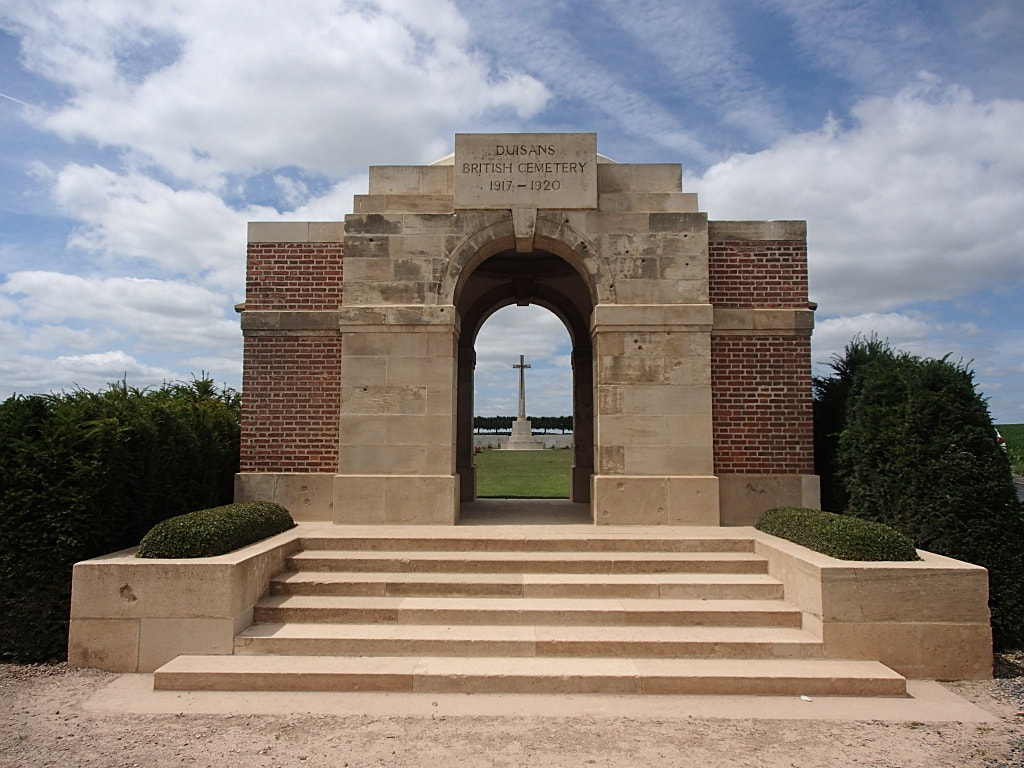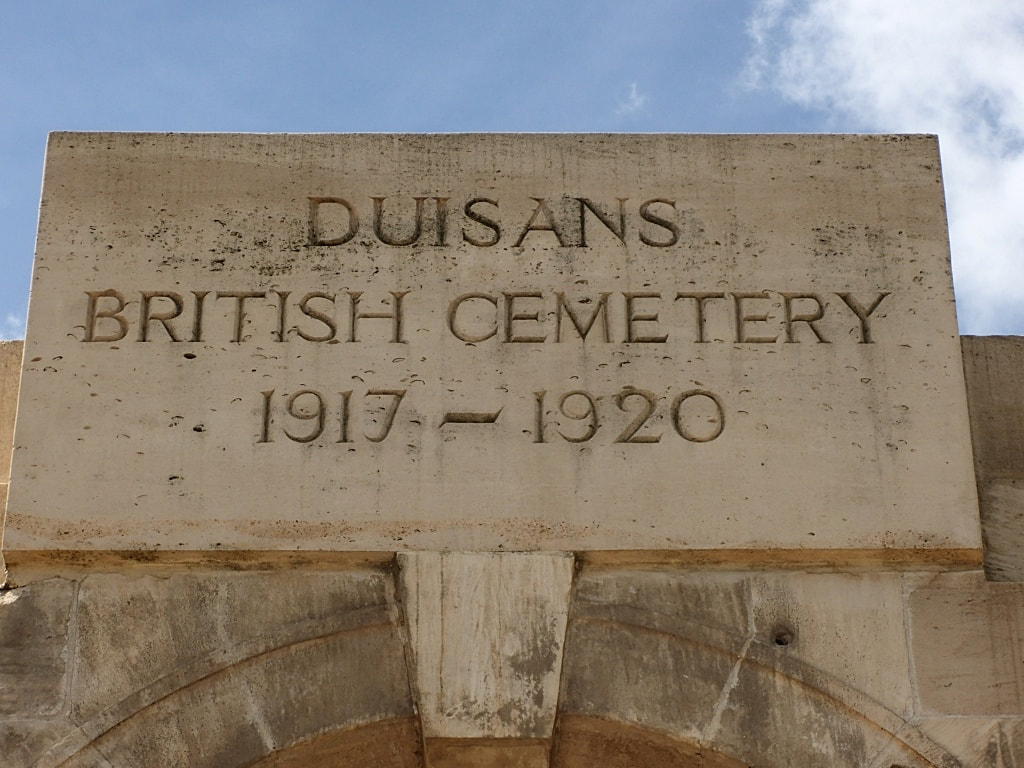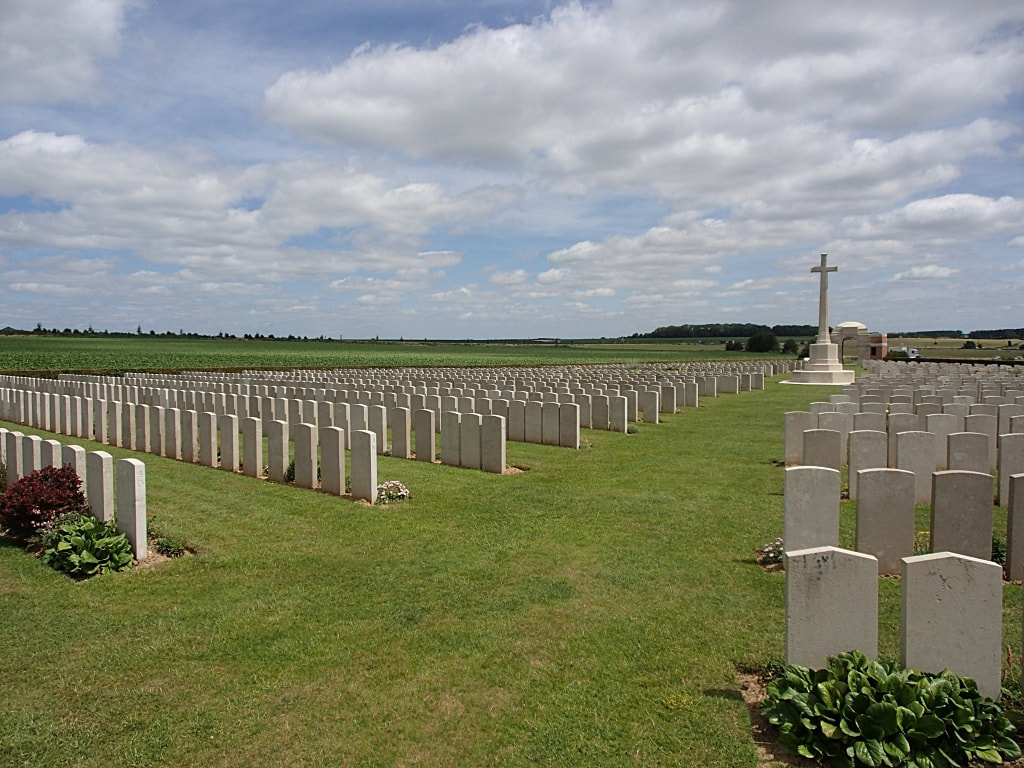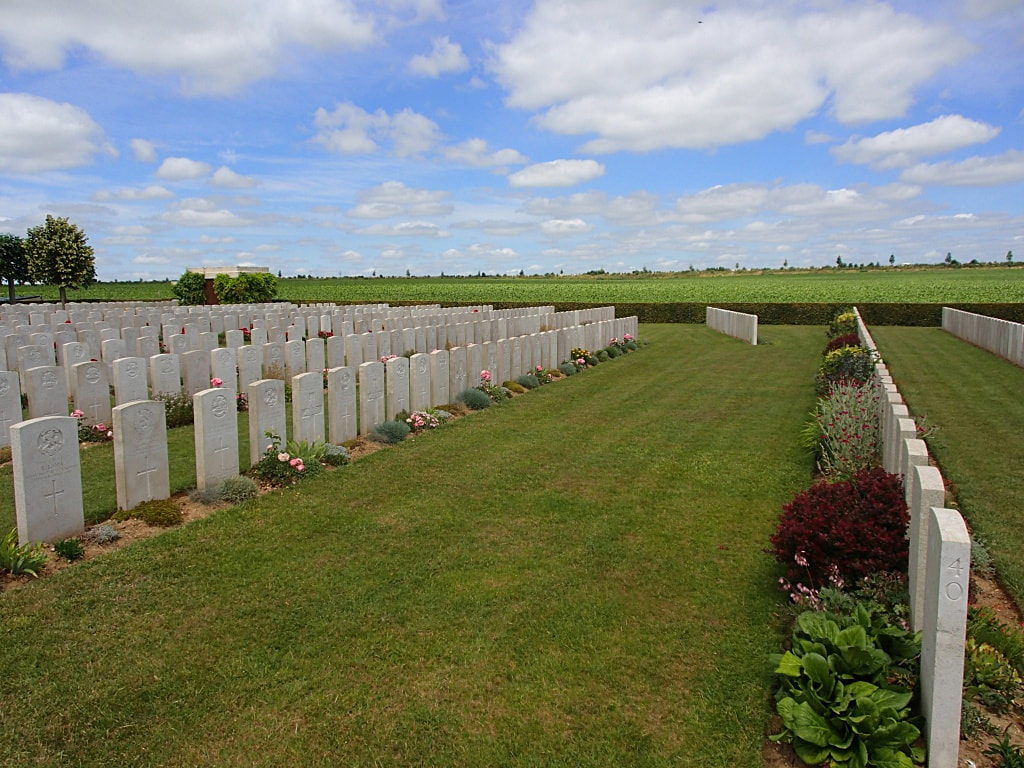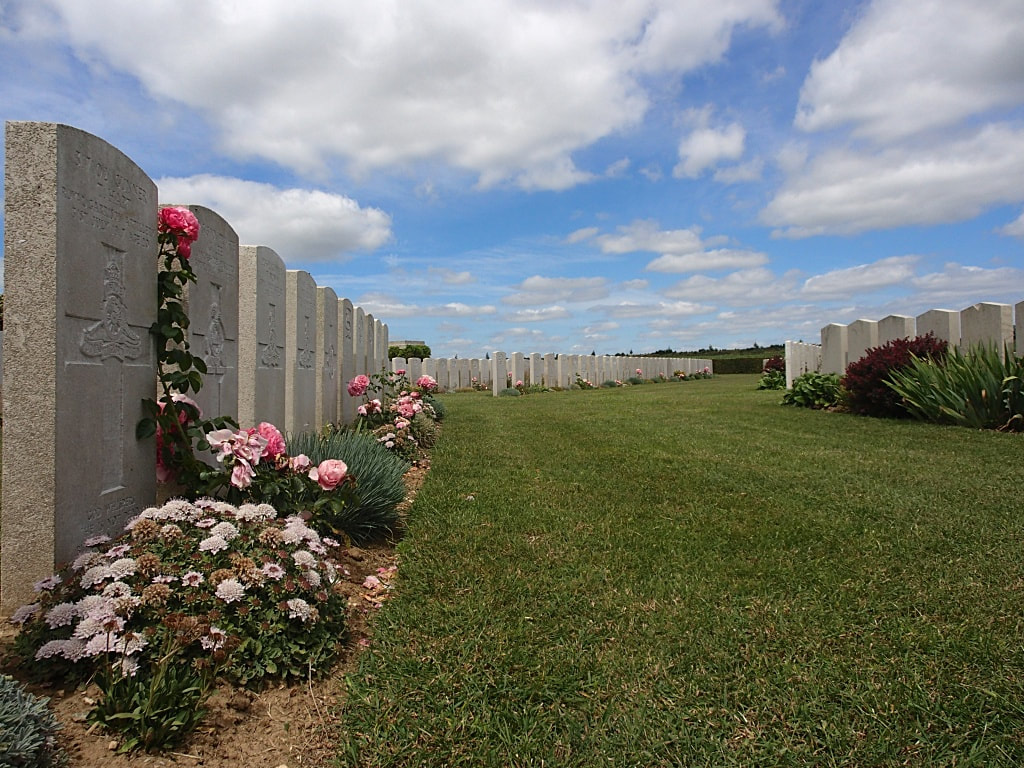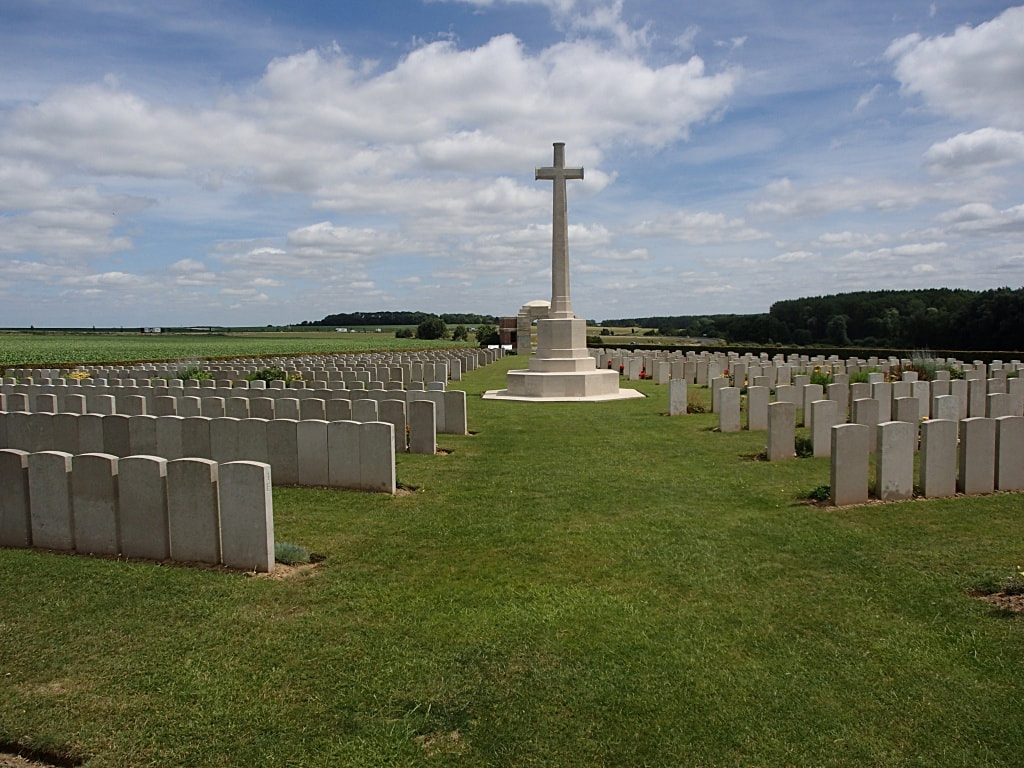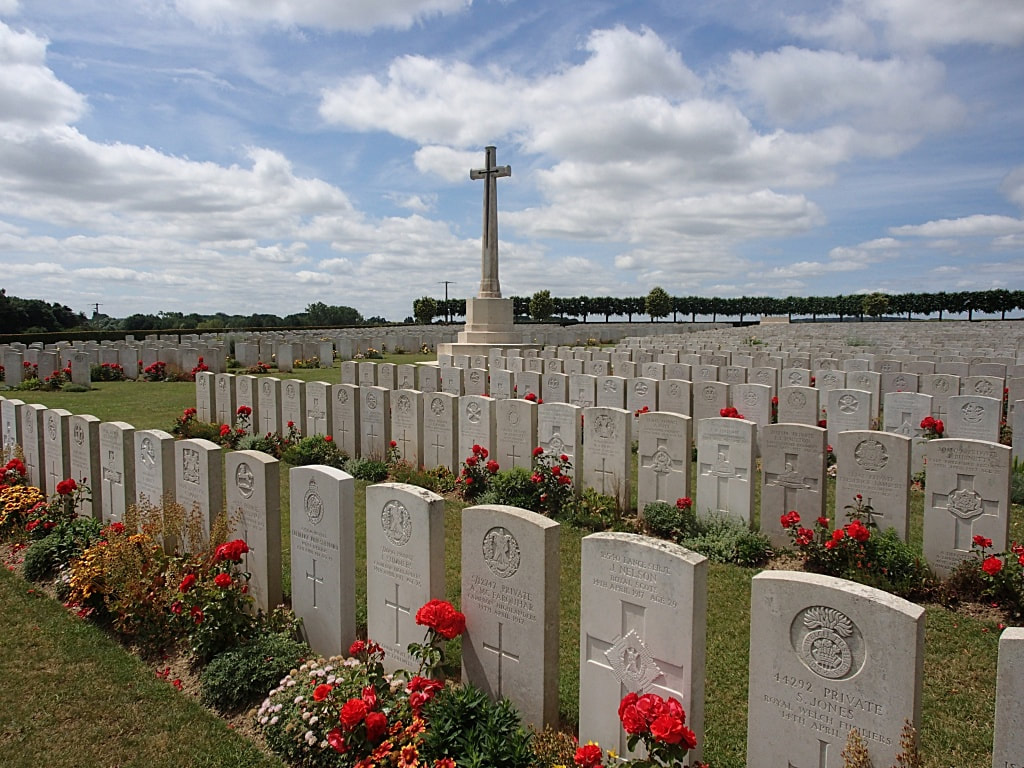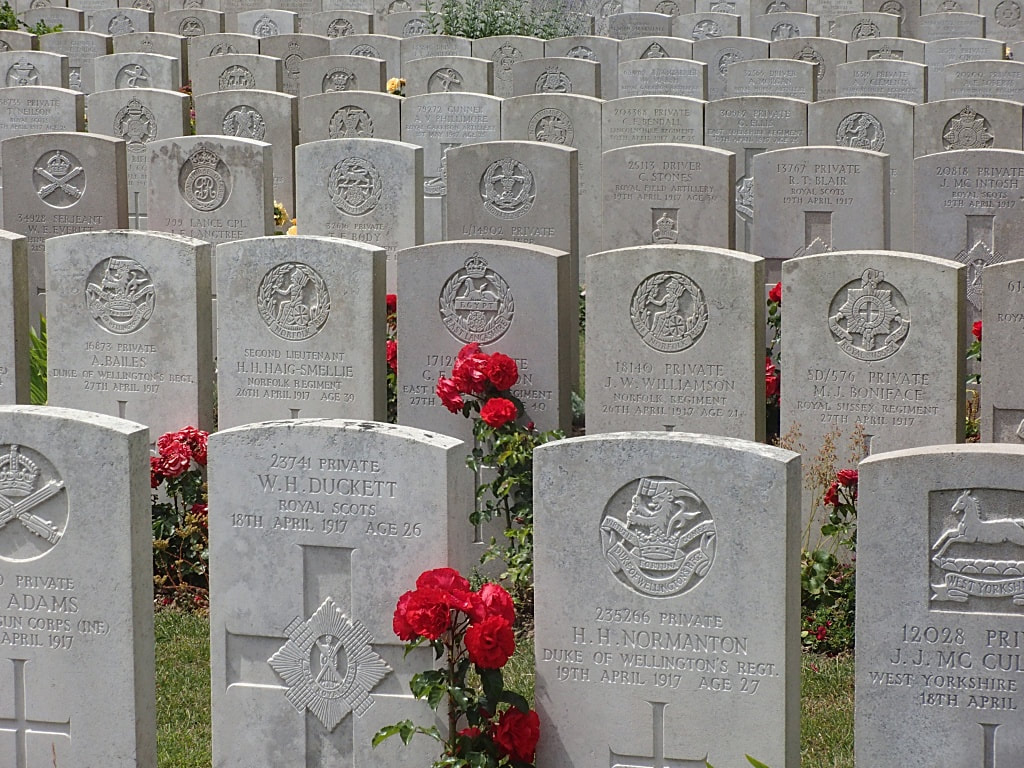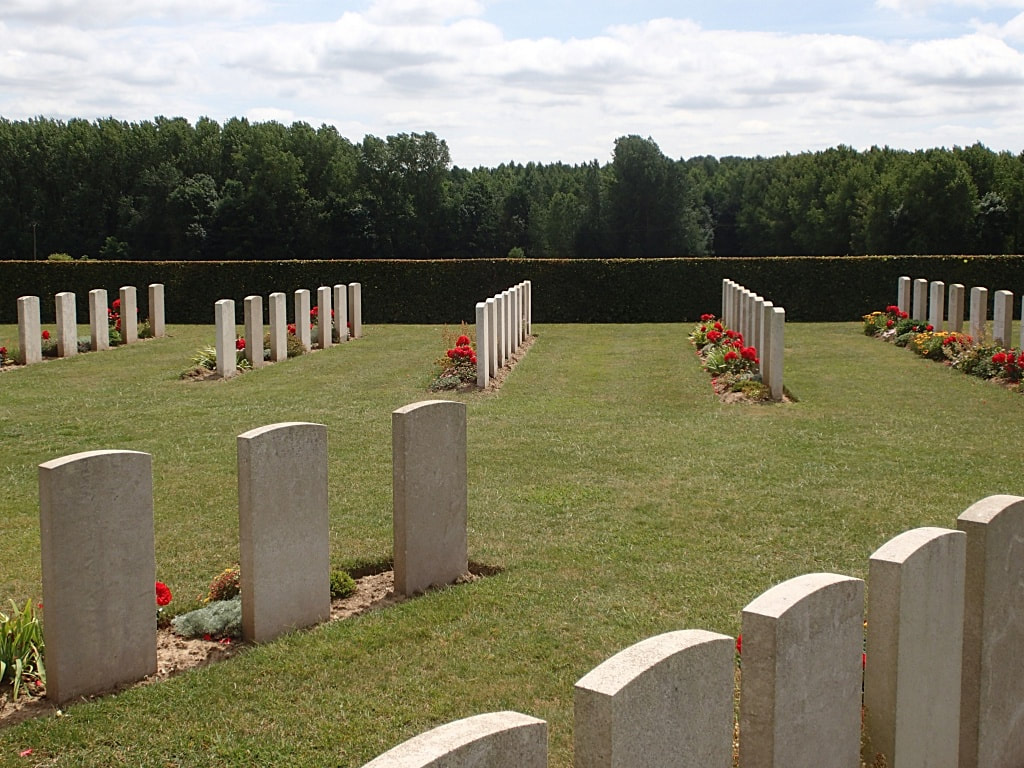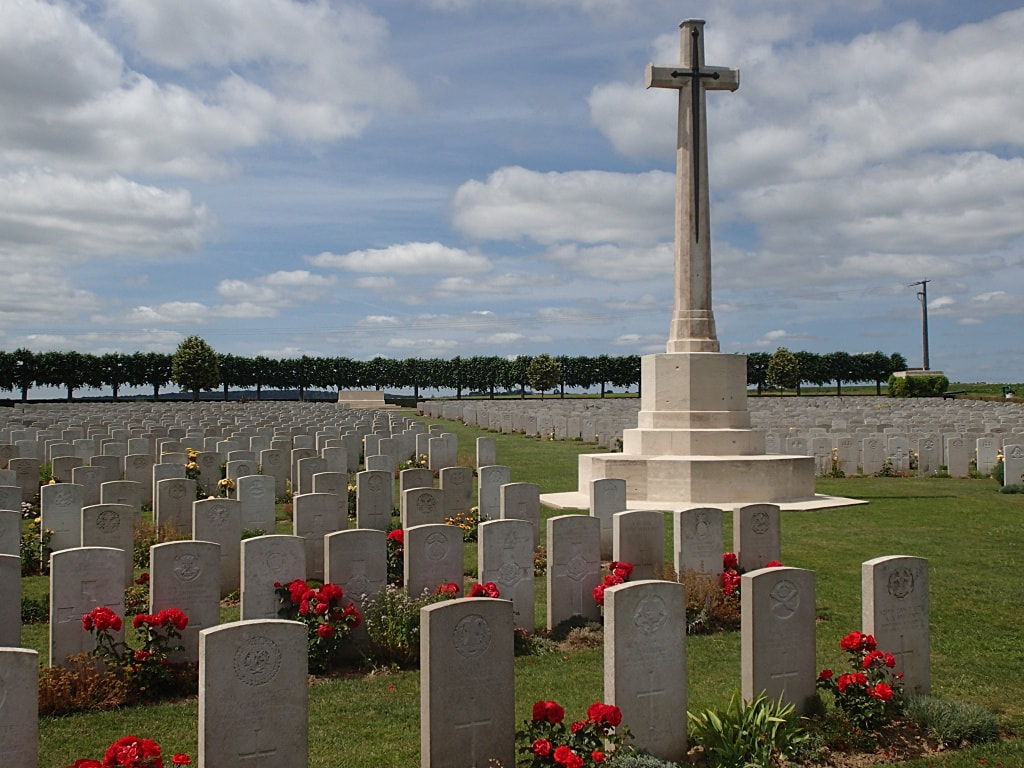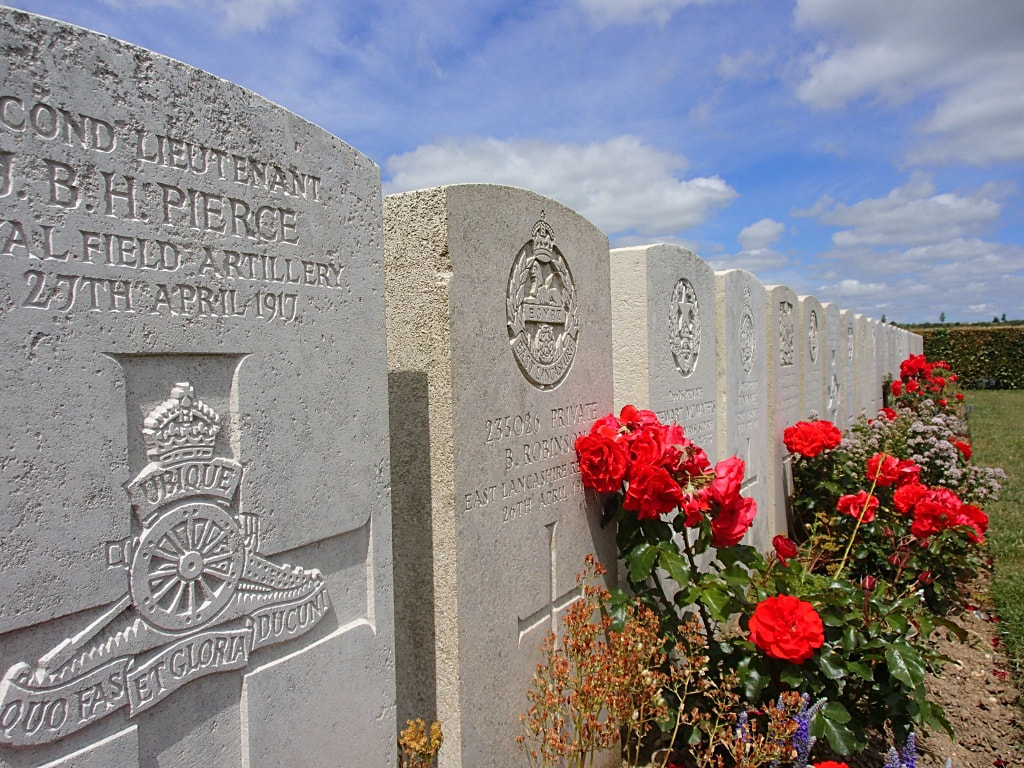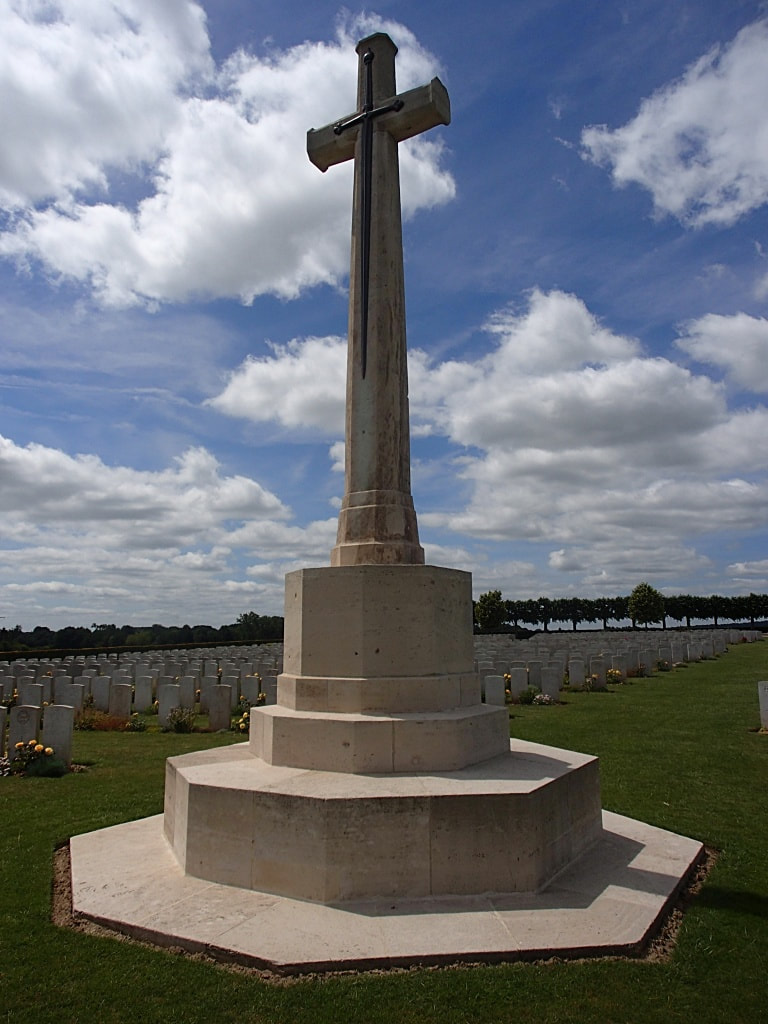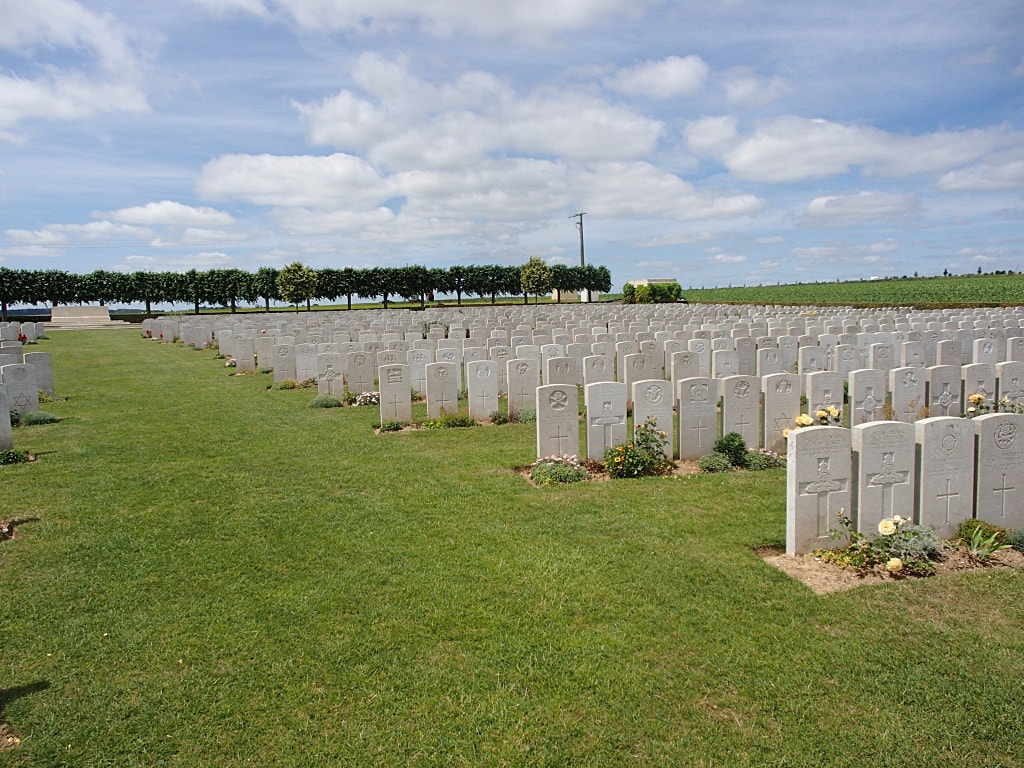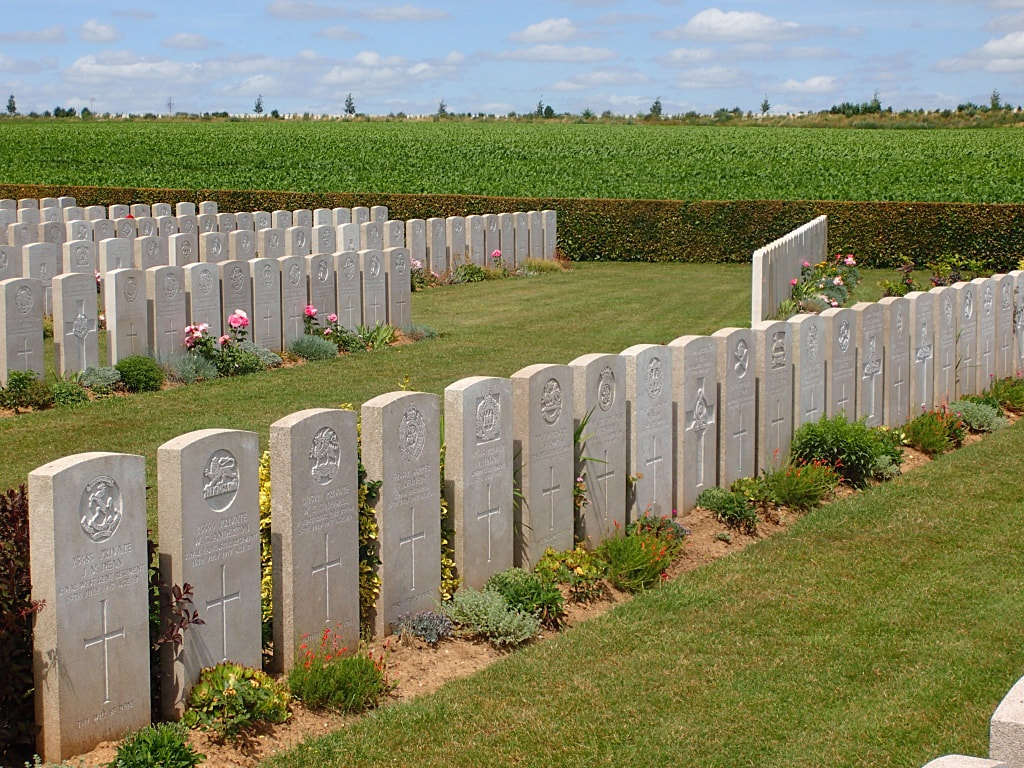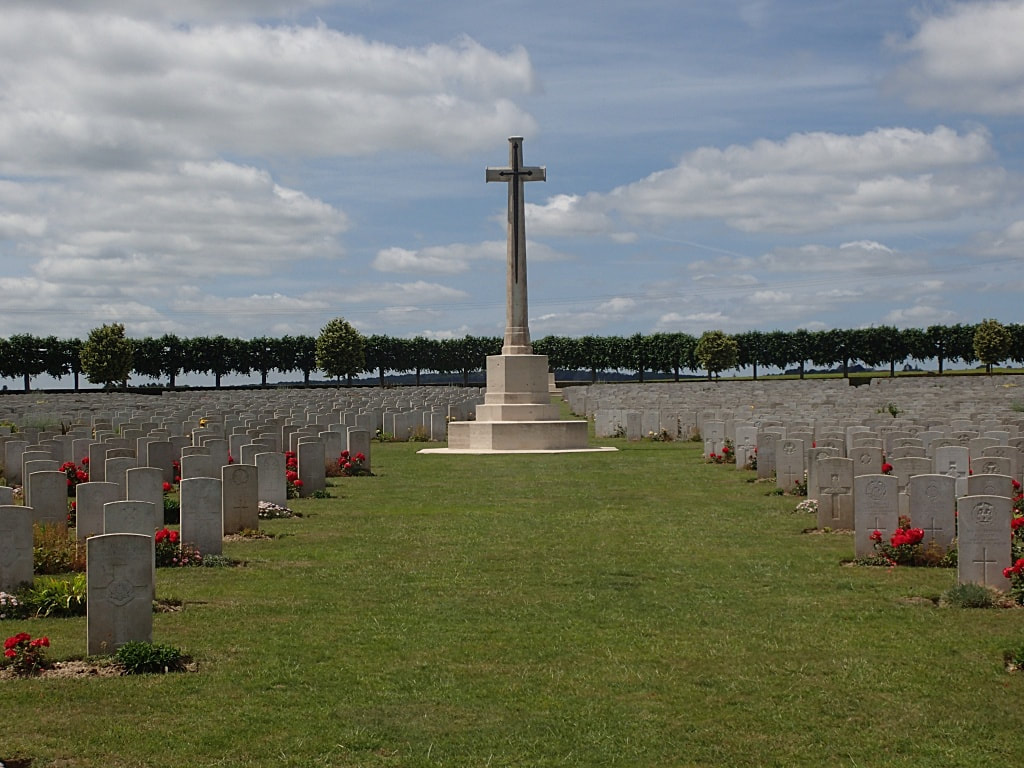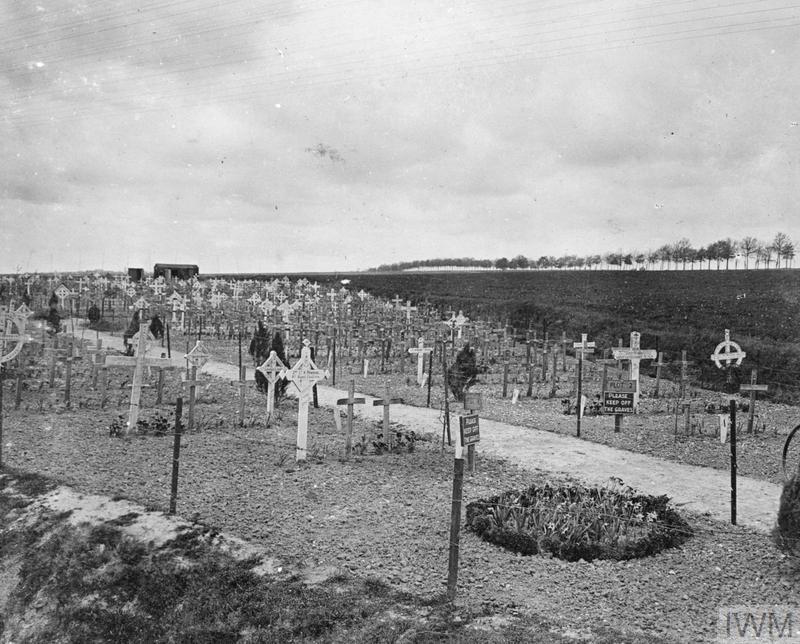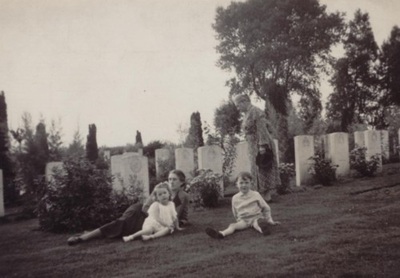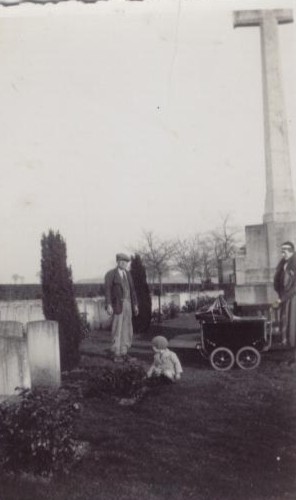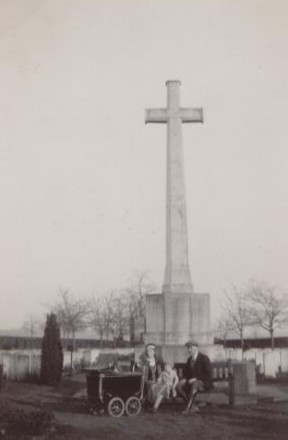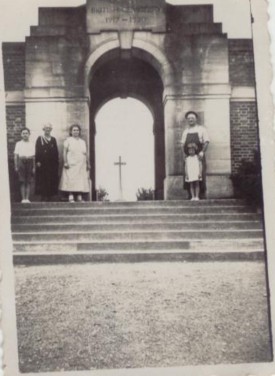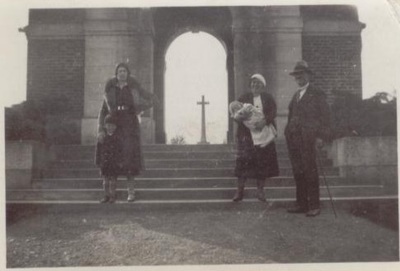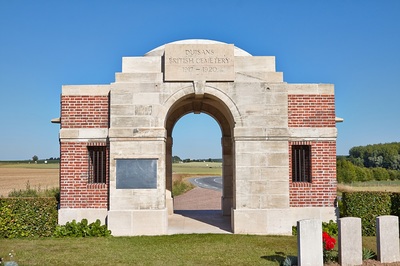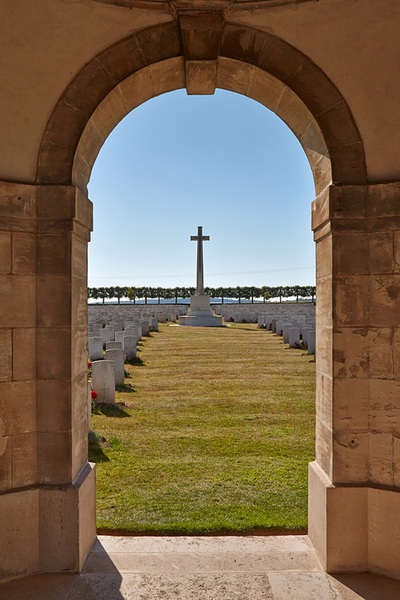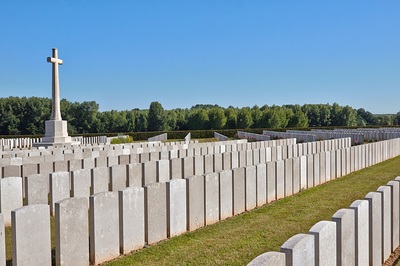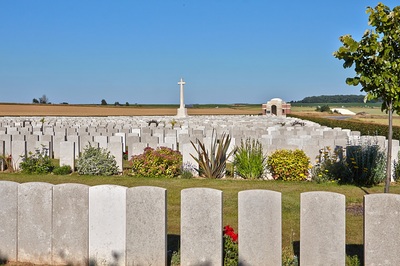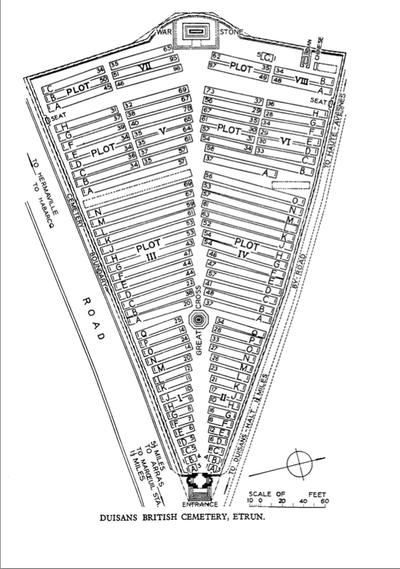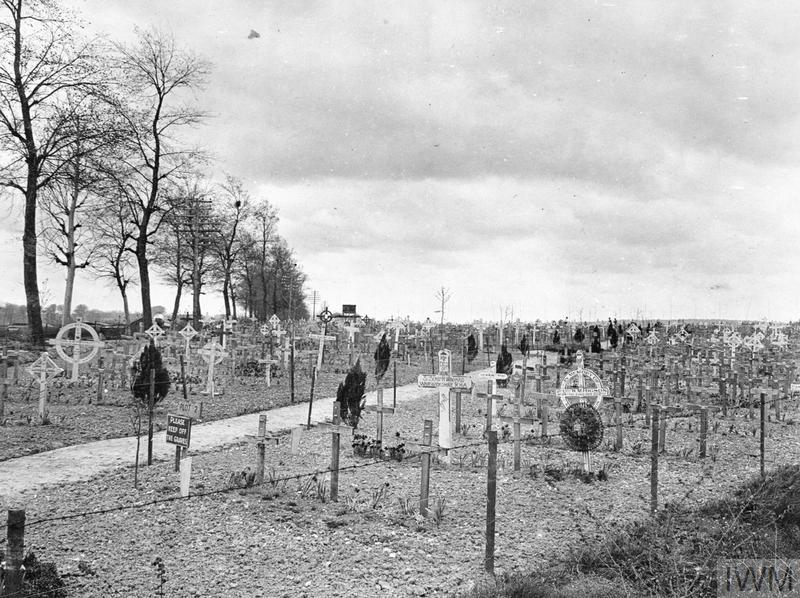DUISANS BRITISH CEMETERY
Pas De Calais
France
Roll of Honour
Listed by Surname
Location Information
Duisans and Etrun are villages in the Department of the Pas-de-Calais, about 9 kilometres west of Arras. The Cemetery lies in Etrun but takes its name from the nearer village of Duisans.
It is one kilometre north of Duisans on the D339 road off the Route nationale N39 (Arras-St Pol), in the angle of the Arras Habarcq road and a track leading to Haute-Avesnes.
Visiting Information
Wheelchair access to this site is possible, but may be by an alternative entrance. For further information regarding wheelchair access, please contact our Enquiries Section on 01628 507200
Historical Information
The area around Duisans was occupied by Commonwealth forces from March 1916, but it was not until February 1917 that the site of this cemetery was selected for the 8th Casualty Clearing Station. The first burials took place in March and from the beginning of April the cemetery grew very quickly, with burials being made from the 8th Casualty Clearing Station (until April 1918), the 19th (until March 1918), and the 41st (until July 1917).
Most of the graves relate to the Battles of Arras in 1917, and the trench warfare that followed. From May to August 1918, the cemetery was used by divisions and smaller fighting units for burials from the front line. In the Autumn of 1918 the 23rd, 1st Canadian and 4th Canadian Clearing Stations remained at Duisans for two months, and the 7th was there from November 1918 to November 1920.
There are now 3,207 Commonwealth servicemen of the First World War buried or commemorated at Duisans British Cemetery. There are also 88 German war graves.
Total Burials: 3,295
Identified Casualties: United Kingdom 2,859, Canada 320, Germany 83, Australia 7, New Zealand 7, South Africa 5, India 3. Total 3,284.
Unidentified Casualties: Commonwealth 6, Germany 5. Total 11.
The cemetery was designed by Sir Reginald Blomfield and Arthur James Scott Hutton
The following pictures courtesy and copyright of Gerard Seddon
(Not to be reproduced without permission)
The six photographs below were taken in the mid 1920's, they show Duisans British Cemetery and a family relaxing within.
Ged Seddon's grandmother was the nanny for this family and the photographs have now found their way into his possession.
(Not to be reproduced without permission)
The six photographs below were taken in the mid 1920's, they show Duisans British Cemetery and a family relaxing within.
Ged Seddon's grandmother was the nanny for this family and the photographs have now found their way into his possession.
The following two pictures courtesy of Liz Williams
These pictures were discovered as undeveloped photos taken by my grandfather John Yelland Hooper whilst serving in Duisans, France , obviously taken prior to graves being taken over by the CWGC. Lieut. O Mowatt died 22 April 1917.
I have tried to contact any living relatives of Osmond Mowatt without success.
These pictures were discovered as undeveloped photos taken by my grandfather John Yelland Hooper whilst serving in Duisans, France , obviously taken prior to graves being taken over by the CWGC. Lieut. O Mowatt died 22 April 1917.
I have tried to contact any living relatives of Osmond Mowatt without success.
Shot at Dawn
7674 Corporal James Reid, 6th Bn. Cameron Highlanders, executed for desertion 11th May 1918, aged 26. Plot V. G. 46. Son of Mrs. Reid, of 11, Holyrood Square, Edinburgh. At some stage wounded, & later during Oct 1917 being under arrest for some offence, he escaped, & was absent for 4 months. Reid was the only NCO shot for a military offence during 1918, & also the last of the pre-war Regulars to be executed. (Putkowski, pp 242-243)
7674 Corporal James Reid, 6th Bn. Cameron Highlanders, executed for desertion 11th May 1918, aged 26. Plot V. G. 46. Son of Mrs. Reid, of 11, Holyrood Square, Edinburgh. At some stage wounded, & later during Oct 1917 being under arrest for some offence, he escaped, & was absent for 4 months. Reid was the only NCO shot for a military offence during 1918, & also the last of the pre-war Regulars to be executed. (Putkowski, pp 242-243)


